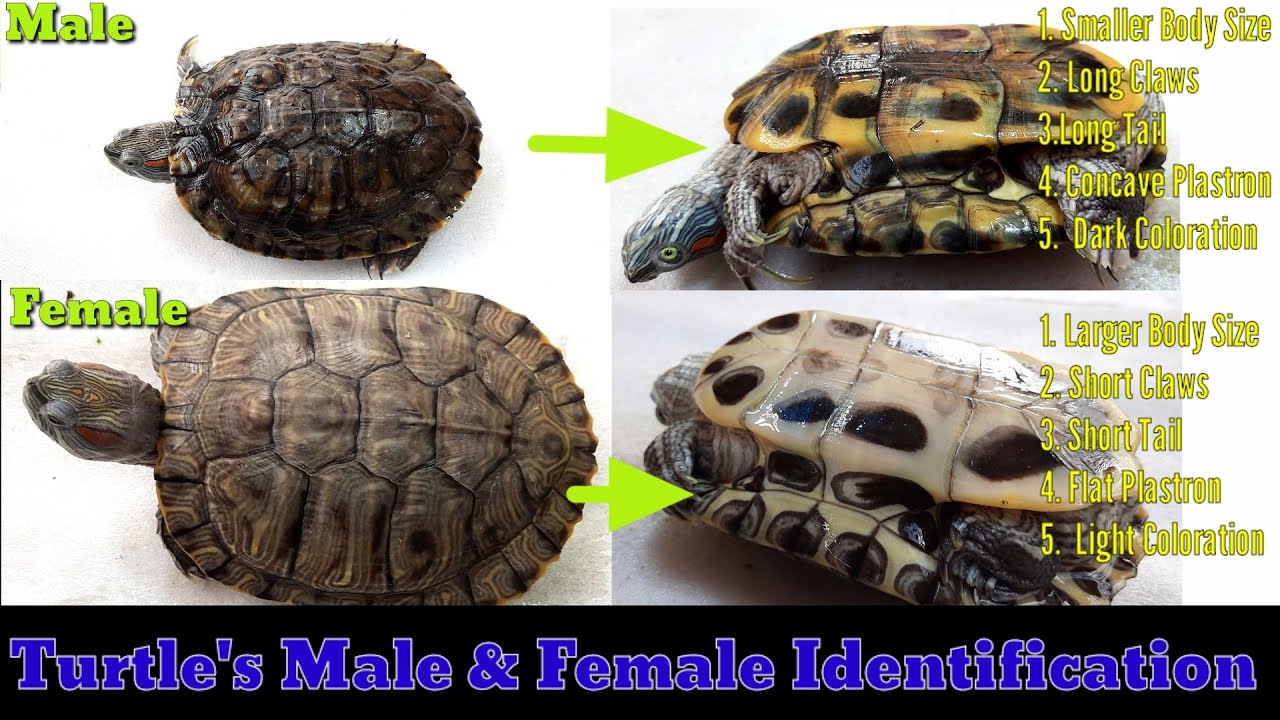Male red-eared slider turtles have longer front claws and a slightly longer and thicker tail than females. Red-eared slider turtles can be easily distinguished by examining the length of their front claws and the size of their tail.
Males typically have longer front claws and a slightly longer and thicker tail compared to females. These physical characteristics are helpful in determining the sex of these popular aquatic turtles. So, if you want to identify the gender of a red-eared slider turtle, look for these distinguishing features.

Credit: petkeen.com
Understanding The Red-Eared Slider Turtle
Understanding the physical characteristics of red-eared slider turtles is essential for distinguishing between the males and females. By observing their size, tail shape, and claws, you can determine their gender. Males are generally smaller and have long, thick tails with large claws, while females are larger with shorter tails and smaller claws.
Additionally, examining their plastron, the underside of their shell, can also provide clues. Males have a concave plastron, which aids in mating, whereas females have a flat or slightly convex plastron. These characteristics are vital for turtle owners to ensure proper care, reproduction, and habitat management.
Therefore, being able to differentiate between male and female red-eared slider turtles is crucial for their well-being and overall health.
Key Differences In Appearance
Male and female red-eared slider turtles can be distinguished through key differences in their appearance. By examining their shells, you can notice notable variations in size and length. Additionally, the head and tail characteristics differ between the two sexes. These variations provide important clues when trying to determine the gender of these turtles.
Understanding sexual dimorphism in red-eared sliders can be valuable for both pet owners and researchers. Being able to identify their gender accurately is crucial for providing appropriate care and studying their behavior. By observing these distinguishing features, you can easily differentiate between male and female red-eared slider turtles.
Behavioral Patterns And Traits
Analyzing the behaviors of male red-eared slider turtles reveals distinctive traits helping distinguish between genders. By observing their interactions, one can identify specific behavioral patterns in females. Understanding the factors influencing their behavior is crucial in this process.
Techniques For Determining Gender
Distinguishing between male and female red-eared slider turtles can be achieved through various techniques. One method involves observing the cloacal characteristics, which can provide accurate identification. Contextual cues can also be utilized to determine the gender of these turtles. By carefully examining these factors, it becomes possible to differentiate between the two sexes of red-eared slider turtles.
Understanding Reproductive Biology
Male and female red-eared slider turtles can be distinguished by their reproductive biology. Understanding their mating and nesting behaviors provides valuable insights. In terms of reproductive systems, both genders have distinct features and functions. Learning about clutch size is significant, as it helps identify female turtles.
By closely observing these aspects, it becomes easier to differentiate between male and female red-eared slider turtles.
Conclusion
To differentiate between male and female red-eared slider turtles, you can rely on a few key characteristics. Firstly, observing the size and shape of the turtle’s tail can provide valuable clues. Male sliders typically possess longer and thicker tails, while females tend to have shorter and narrower tails.
Moreover, examining the turtle’s plastron, or the underside of its shell, can offer further insights. Males usually have a concave plastron, enabling them to mount females during mating. In contrast, females possess flat or slightly convex plastrons to facilitate egg laying.
Additionally, considering the turtle’s behavior can also be helpful. Males exhibit more aggressive behaviors, such as head bobbing and extended claw displays, especially during breeding season. Meanwhile, females tend to be more docile. Understanding these distinguishing features will allow you to accurately determine whether you are caring for a male or female red-eared slider turtle.
So, take your time, be observant, and enjoy getting to know your turtle’s unique characteristics.





Leave a Reply